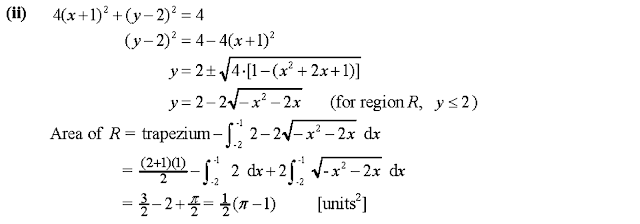Question
Introduction
This question
is like this previous one, except it is of olympiad standard.
I illustrate the solution of this without algebra, by using Distinguised
Ratio Units. As before, I try to match
parts to an equal number. But here we
have quite a mixture of different types of units.
Solution
Commentary
Basically
we make the triangle units to number 12 and do the same for the circle and
square units. It turns out that one
triangle unit is the sum of one circle unit and square unit. We deduce that 9 circle units (for the area of
A) plus 6 circle units (for the area of
B) is the same as 8 circle units and
8 circle units. The reduction of circle
units must be equally compensated by the increase in the circle units. Thus one circle unit is the same as two square
units. From here, things become easy.
H02. Use a
diagram / model
H04. Look for
pattern(s)
H05. Work
backwards
H09. Restate
the problem in another way
H11. Solve part
of the problem
Suitable Levels
* Primary School Olympiad Mathematics
* Primary School Mathematics (challenge)
* other syllabuses that involve areas and
ratios
* anyone who is game for a challenge


































